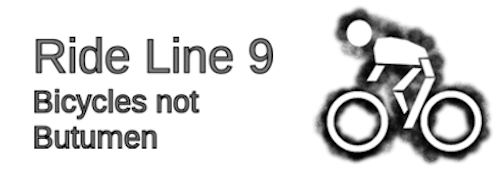Stephen Buckley, Toronto's transportation chief, has been very reluctant thus far to install protection on the separated bike lanes approved by City Council. Numbers coming from his own City Cycling Department (@TO_Cycling) should convince him to give up that reluctance if he has any desire to increase the number and diversity of people cycling in Toronto. This tweet presented the bike counts on Sherbourne, before and after the installation of cycle tracks:
Bicycle traffic averages on Sherbourne were 955/day in 2011 bike lane, they are now 2,827/day in Cycle Track #biketo
That's almost a 300% increase!!
Even with all its warts (not enough protection from car incursion, bike lanes not wide enough), Sherbourne cycle tracks are demonstrably popular.
On Facebook, Christine Bouchard of the City compared this to the expectations around motor vehicle traffic and road capacity:
In order for a street to be classified as a "local" street by the City of Toronto, it must carry less than 2,500 motor vehicles/day.
Since the Sherbourne Cycle Tracks are carrying an average 2,827 cyclists a day, this means that in the summer months these lanes are actually carrying more traffic than the 3,291km of local roads, in Toronto's 5,359 km road network.
Bouchard demonstrates well how cycling infrastructure is way, way more efficient in moving people for local trips than moving big metal boxes on wide roads.
Some of the increase in bike traffic can be attributed to Jarvis no longer having bike lanes. But even during the brief period when there were bike lanes, the number of cyclists was relatively low compared to Sherbourne; in the range of 890 per day and 290 before the bike lanes (some of the increase was attributed to the bike share launch). Even if all the people (technically, trips) who started biking on Jarvis because of bike lanes (around 600 per day) started biking on Sherbourne (unlikely that they all would) it would still only account for 1/3 of the Sherbourne increase.
Another reason to be confident that the cycle tracks are working (even though the City still needs to improve the separation on the bottom section) is that this bicycle count nicely correlates with a recent study of protected bike lanes in US major cities which found that bicycle traffic jumped quite a bit in the first year after installation. Bike Portland summarizes the main points:
- Over a quarter of riders indicated they are riding more in general because of the protected bike lanes.
- In its first year alone, a protected bike lane increases bike traffic on a street by an average of 72%
- 96% of people riding in protected bike lanes felt safer on the street because of the lanes
- 76% of people living near protected bike lanes support the facilities in additional locations, whether they use them or not
- Drivers thought traffic became more predictable after protected lanes were installed. Most drivers said congestion and drive time didn’t change.
- Parking is a key issue when street space is reassigned and cities. The impact to parking was the most negative perception, with about 30-55% of residents indicating the impacts to parking were negative, even in cases where a minimal amount of parking was removed, or parking was increased.
- In the 144 hours of video analyzed for safety, studying nearly 12,900 bicycles through the intersections, no collisions or near collisions were observed. This included both intersections with turn lanes and those with signals for bicycles.
- Over half the residents surveyed (56%) felt that the street works better for “all people” due to the protected bike lanes, while only 26% felt the street works less well.
- Nearly three times as many residents felt that the protected bike lanes had led to an increase in the desirability of living in their neighborhood, as opposed to a decrease in desirability (43% vs 14%).
Protected bike lanes are demonstrably popular and safer. This should be enough to convince Buckley that painted lines—including the double painted lines they like to pretend are "buffers"—are not enough. But will it be enough?
(In other news, while Toronto's cycle tracks project on Richmond and Adelaide drags on for years and years in an EA and can't even get proper protection during the pilot phase, Hamilton amazingly has almost completed the installation of a two-way protected bike lane on Cannon Street after approving it just this year! And they didn't even do an EA or a pilot, which isn't required by provincial law despite what Toronto might claim.)

